Riding around town, cruising the boulevard, and going to bike nights at the local hotspot is fun. But for some of us, the open road beckons us.
Let’s talk about long-distance motorcycle riding.
For the sake of clarity, I am assuming that you aren’t moto-camping or using a motorcycle camping trailer. I have logged over 14,000 miles this year on Rever, and I don’t track commutes or about half of my day rides.
That said, compared to some folks – I’m a rookie, but I have learned a few things riding around the country.
Here are my top 13 tips for long-distance riding.
Contents
1. Detailed plans or improvise?
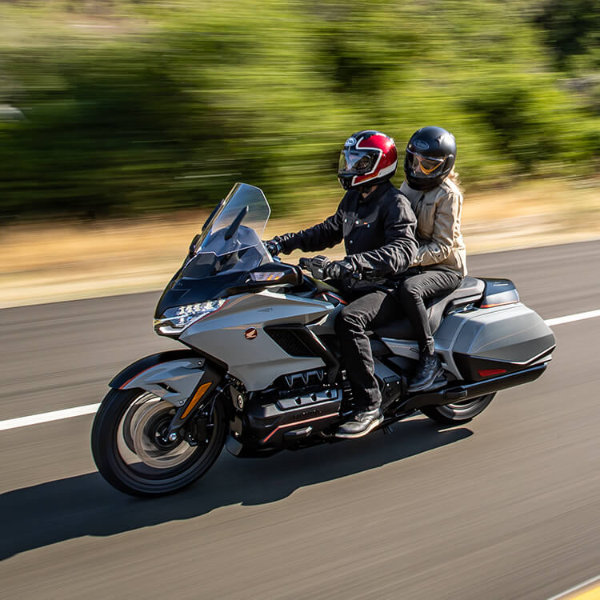
Some folks like to meticulously plan trips down to where they will stop for gas. Some just start with a vague idea of what direction to head and when to be back.
Most people – myself included are somewhere in between these extremes.
I plan my overall route, allowing some extra time for side trips and detours. Some of the most incredible side trips are ones recommended by local riders. They know the good spots. Be flexible!
2. Routes or destinations?
Is the question “Where are we going?” or “Which WAY are we going?”
If you want to explore the countryside, stay on US highways or state highways. That lets you see the countryside and visit some small towns. If your focus is on getting somewhere in the shortest time, take the interstate highway.
I live in Texas, so most of my long out-of-state trips are a combination. I’ll take the interstate to get out of my immediate area, then switch to back roads once I get to a new place to explore.
Riders tend to like twisting and turning back roads. A lot of passengers want to know when we’ll get to the destination. While it should be interesting or fun, the destination is just where I have to turn around and come home.
3. How many miles should I ride in a day?
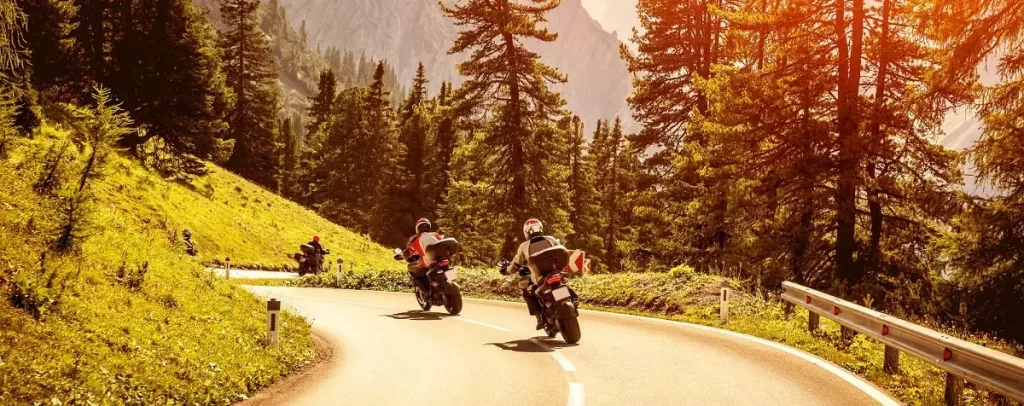
I have done Iron Butt rides of over 1000 miles in a day, and I have had days that I only made it 250 miles because I stopped to take a lot of pictures.
Mileage is situational and depends on the rider and passenger.
I’m generally happy with a 350-550 mile day. My daughter is more comfortable with 250-350 mile days unless there are lots of breaks.
The answer to what is long-distance is a personal one. To me, it’s an overnight trip as a minimum. If I don’t have to pack for multiple days, it’s just a day trip, and not much planning is needed.
4. Where do I put all my stuff?
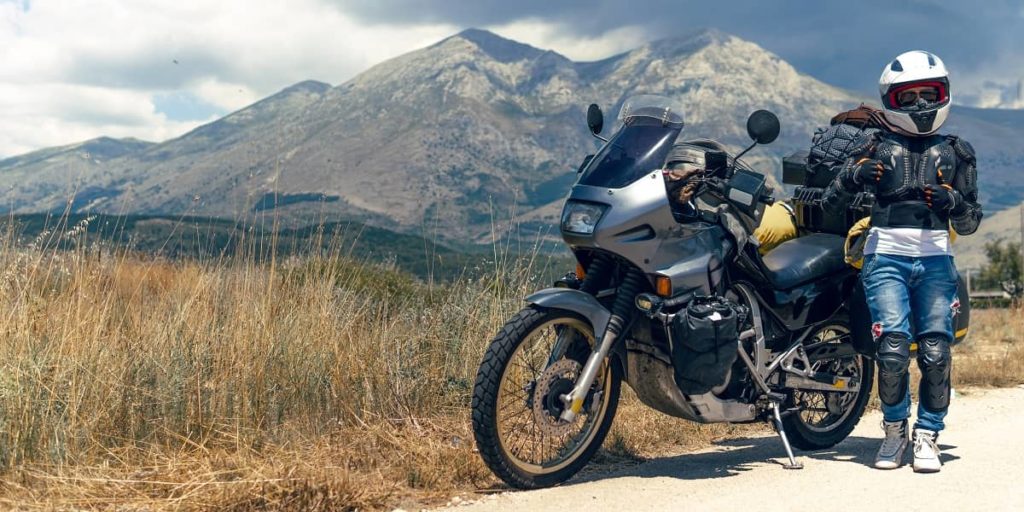
Of course, the type of bike you have will determine how much you can bring, which will color the rest of the ‘packing’ topic. A sportbike can’t carry as much as a big touring bike with a trailer!
For most motorcycles with saddlebags, I suggest investing in either saddlebag liners or at least in a couple of backpacks that fit in your saddlebags. The same goes if you have a tour pack or tail bag.
It’s a lot easier to carry your stuff into the hotel in 2-3 soft-sided bags than trying to juggle loose items.
5. How many clothes to take?
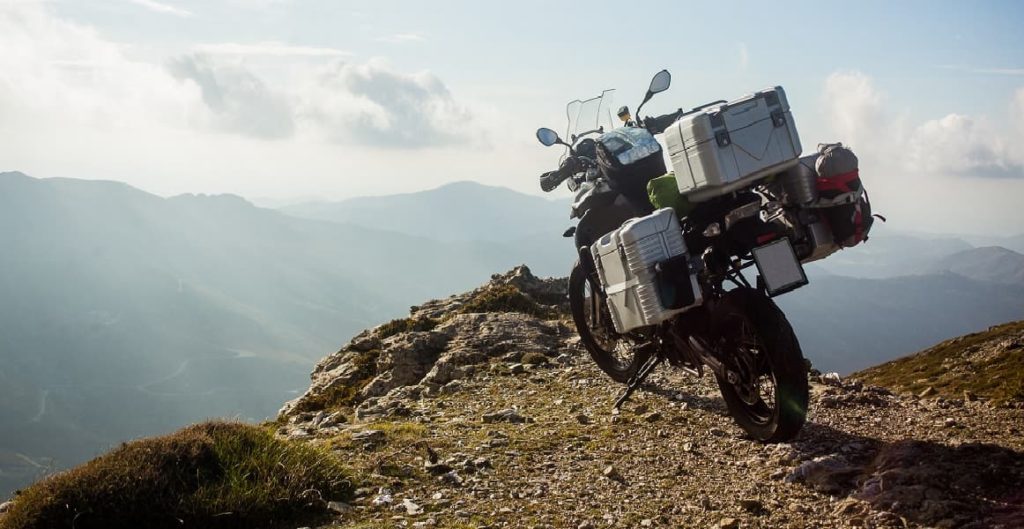
Overpacking is a big mistake made by many. We take too much stuff!
Hotels have laundry facilities for guests, and there is a Walmart or Dollar General in almost every town. I ride in jeans and a shirt when it’s warm and add on a jacket when it gets chillier.
I plan clothes like this :
- You can usually wear jeans for two days, so the pair I have on plus a pair packed covers me for four days.
- You will probably purchase souvenir t-shirts along the way, so wear one and pack two.
- Add a wrinkle-resistant shirt with a collar. Just in case you want to go to a semi-nice place for dinner that may frown on your sleeveless Harley t-shirts.
- Four days’ worth of good socks and underwear.
- A pair of shorts or sweatpants for laundry day or lounging around the hotel.
- I usually take a swimsuit also. After a hot day’s ride, a dip in the hotel pool is refreshing in the summer, and a soak in a hot tub is welcome anytime.
- Sneakers or sandals for walking around.
I know some ride in much more protective gear, but the principle is the same. If it’s less than a four-day trip, reduce the numbers accordingly. If it’s more than a four-day trip, do laundry on the evening of day four or the morning of day five.
6. What to pack – non-riding stuff?
Just like any trip, you also need a few things that are not clothes as well. I suggest a visit to Walmart to get any of these things that you don’t already own.
- Two small toiletry bags – one is for essential toiletries, the other is for cell phone chargers and other cords.
- Get travel-sized shampoo/conditioner and body wash if you don’t like using the hotel stuff. Don’t lug around full-sized bottles of the stuff! Try to share as much as possible with your passenger if you have one. After a whole day in a helmet, you probably won’t care how your hair smells after a shower!
- Medicines
- Contact lenses and travel-sized saline.
- Toothbrush with case and travel-sized toothpaste.
- Chargers/cables for any devices you are bringing.
- Motorcycle earbuds if you like to stay connected or listen to music
7. How to stay warm?
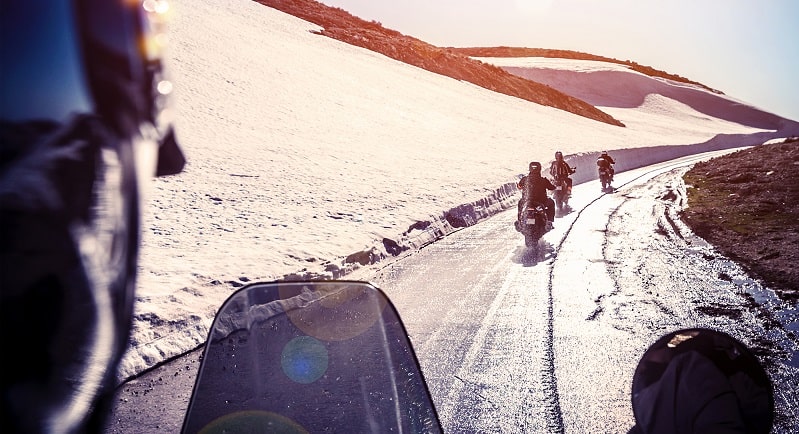
Technology has come a long way from the old days of bikers stuffing newspapers under their jackets for insulation. Today some options run from simply adding layers to heated clothes that run on batteries or plug directly into your motorcycle’s electrical system.
If you live in a region where it’s frequently freezing, it may be worth the investment, but be prepared to spend over $1000.
For the rest of us, layers do the trick. Layering is perfect during those tricky times in the spring and fall when the mornings and evenings are cold, but midday is warm and pleasant.
I frequently use Hanes/Fruit of the Loom thermal underwear as a base layer, then jeans and a long-sleeved t-shirt or light hoodie, topped off with my leather jacket.
A good jacket will be a game-changer, do not skimp on this! Mine has a zip-out liner as well as zippered vents. It’s comfortable from the upper 70’s to the low 40’s.
An essential part of staying warm is gloves. I keep a light and heavy pair plus some waterproof covers for those cold rainy days.
8. How to stay cool?
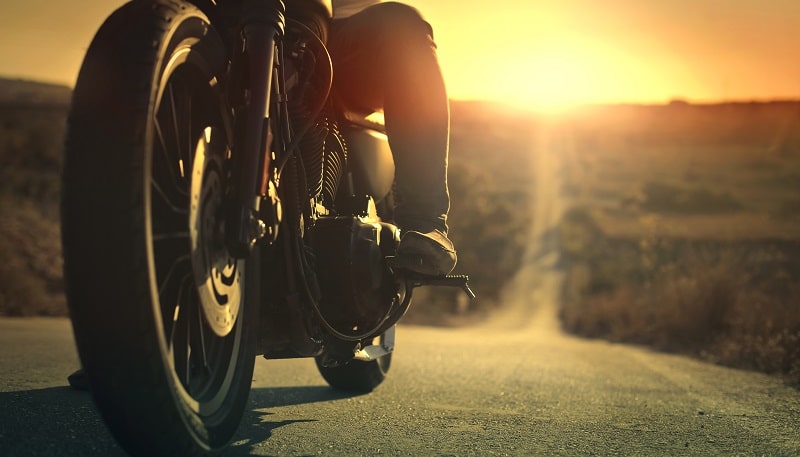
Staying cool is undoubtedly an overstatement when you are riding through the desert when it’s over 100℉. The goal here is avoiding heat stroke or heat exhaustion.
My go-to on this is a lightweight long-sleeved white shirt and a cooling vest my father-in-law gave me.
It works great. Soak it for 5 minutes in a sink, and you are noticeably cooler until it dries entirely out. By then, you are probably ready for a break as well.
The thing to avoid here is the idea that riding your motorcycle is like jogging or walking at the beach. Tank tops or sleeveless shirts are not the best ideas in extreme heat. You will dehydrate faster and risk a painful sunburn even with sunscreen.
9. How to stay dry?
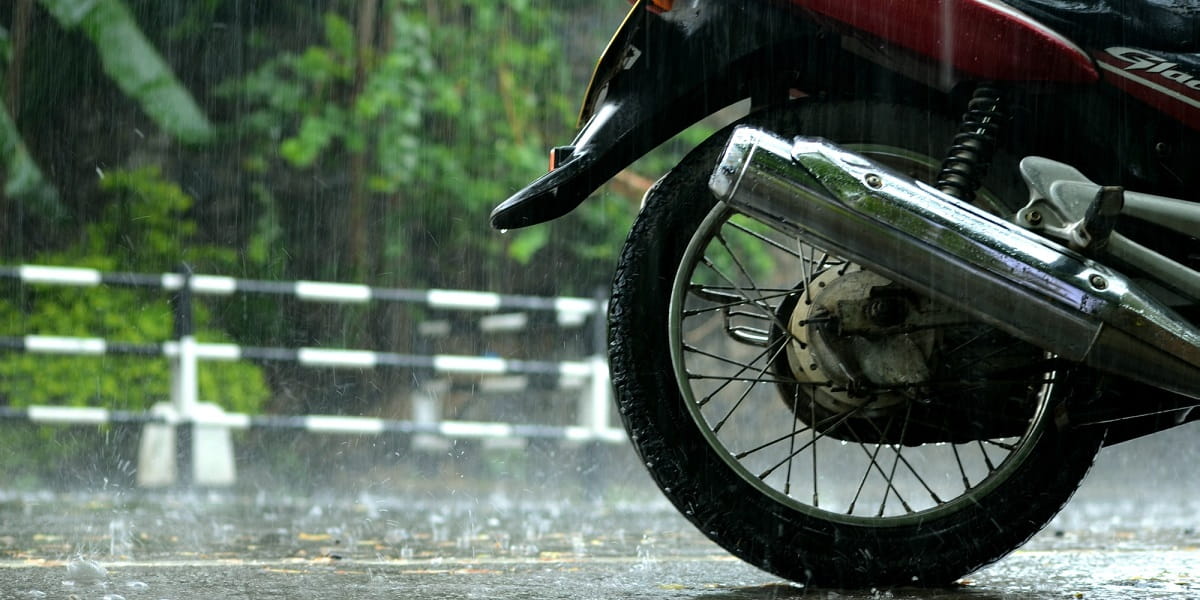
As motorcyclists, we’ve all heard the same question from non-riders. “What do you do if it starts raining?”. For years my answer was, “I get wet.”
Sure, I had a leather jacket and leather chaps like any well-dressed Harley guy, but at the end of the day, if it rained, I was wet.
No more.
Get proper rain gear. If you can’t afford good equipment, get ‘ok’ gear. It beats nothing.
Something to look out for is the pants. Make sure they either have the straps that go under your boot like a stirrup or at least elastic banding. Cheap rain gear not made for riding will slip up to your knees at highway speeds.
The other thing to watch out for is heat shielding. Cheap pants will melt to your header pipes if you brush against them getting on or off or even if they are flapping in the wind.
10. How to stay hydrated?
Riding any distance is dehydrating. It gets exponentially worse as the temperature goes up. Dehydration can lead to increased fatigue, slowed motor responses, and fuzzy thinking, increasing your chance of crashes. “Drink before you are thirsty” is a rule of thumb.
When the heat gets over 80, drink at least 8-10 oz of water at every fuel stop. If the temperature is over 90, I double that. Yes, a whole bottle of water at every fuel stop or 150 miles, whichever is LESS. In 100+ temperatures, I add in a small bottle of Pedialyte or Gatorlyte every second or third stop.
Lastly, pay attention when you pee. If your urine is darker or stronger smelling than usual, increase your hourly liquid intake until it’s almost clear.
11. How to stay safe?
Keeping yourself safe while long-distance riding has two different meanings, depending on if you are riding or stopped.
If you are around other vehicles, keep a wary eye on them. While you may be exhilarated by the surroundings, to that driver in the SUV, it’s just a long boring drive. Even in the middle of nowhere, keep your head on a swivel.
The other place where you may find yourself in danger is when you stop. Try to stop at busy truck stops or at least well-lit and well-maintained gas stations.
Carry a can of pepper spray if you frequently travel alone after dark. Trust your gut; if it feels creepy, get your gas and leave if you can’t make it to the next station.
12. How to stay healthy?
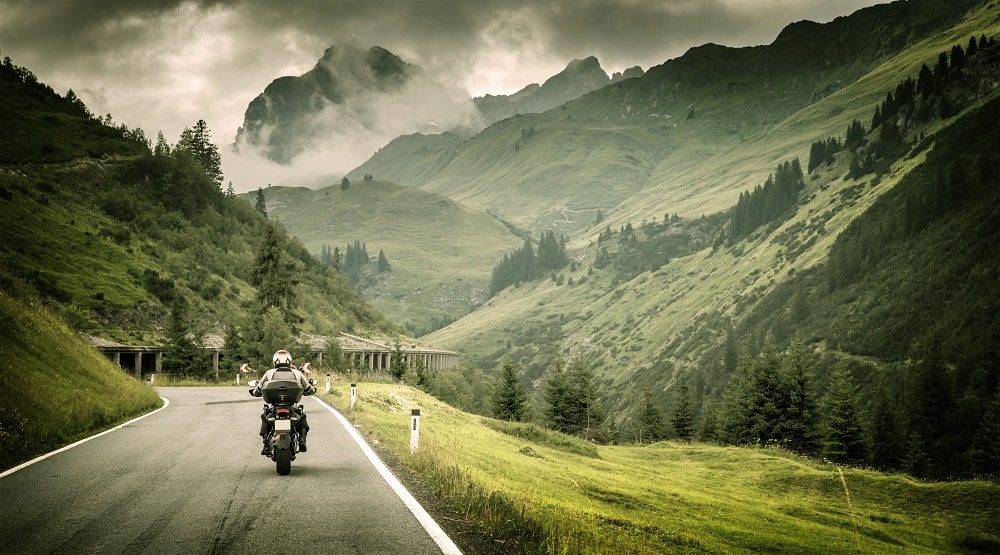
This one is more for the frequent long-distance rider, but the point is valid for us all.
On the road, it’s too easy to succumb to the lure of cheap, tasty fast food. I’m not saying avoid burgers etc., entirely. I am telling you to consider healthier snacks at stops like nuts or jerky.
Watch out for premade “trail mix,” as it often has candy or other sugary bits in there that make it very calorie-dense for hikers. You aren’t burning that kind of calories riding. Drink lots of water and have at least one good meal per day.
13. How to stay sane?
Wait, what? If you travel with a group, then you have to up your patience a little. Everyone has a different bladder size, gas tank size, and tolerance for long rides.
Every rider needs to agree on how many hours per day they want to ride and how frequently to stop. Otherwise, there will be tension, bickering, or grumbling as people get tired and patience gets thin. Even if it’s just you and your passenger, make sure you agree.
If you are riding alone, it can be very therapeutic to have the time and peace to think through things and contemplate life.
The problem can come if you wind up overthinking things to the point of distraction.
There is a fine line between being “in the zone” where the miles melt away effortlessly and being “zoned out,” which is usually a way of saying “tired driving.”
Rider fatigue is extremely dangerous. If you start to feel tired, pull over.
Final Thoughts
Seeing the world from the back of a motorcycle is a unique experience. For some, it’s about getting off of the interstate and experiencing the countryside and meeting people.
For others, it’s the peace and solitude of a long ride.
For most of us, it’s a combination of all of these things and some other feelings that we can’t put into words. Not everyone loves long days on the bike, hotels, truck stops, and various weather conditions, but for some of us, it becomes a passion.